20 Must-Know Productivity Tips To Transform Your Day Starting Now
Discover 20 productivity strategies to elevate your performance, save time, and achieve more in your day. Start using these proven tips now.

This article contains affiliate links. For details, please see our affiliate policy.
Ready to supercharge your productivity? Mastering productivity is essential if you are trying to meet work deadlines, manage personal commitments, or simply find more time for yourself to do things you love.
In this post, I’ll share a list of 20 exhaustive, powerful strategies that can completely transform how you manage your time and tasks. These are not just tips; they’re proven methods that can help you focus, get more done, and achieve your goals faster. If you're tired of feeling overwhelmed, this is your guide to taking back control of your time and becoming more efficient, one step at a time. Start with the one that resonates with you the most, and then work your way through the others for maximum benefit and productivity.
Let's explore each one of them!
1. Achieve More with SMART Goals: Set Clear, Actionable Objectives
SMART goals are a time-tested framework that helps you set clear, measurable, and attainable objectives. The acronym stands for Specific, Measurable, Achievable, Relevant, and Time-bound. By defining your goals using these criteria, you can significantly boost your productivity and ensure that you’re making consistent progress toward your long-term objectives.
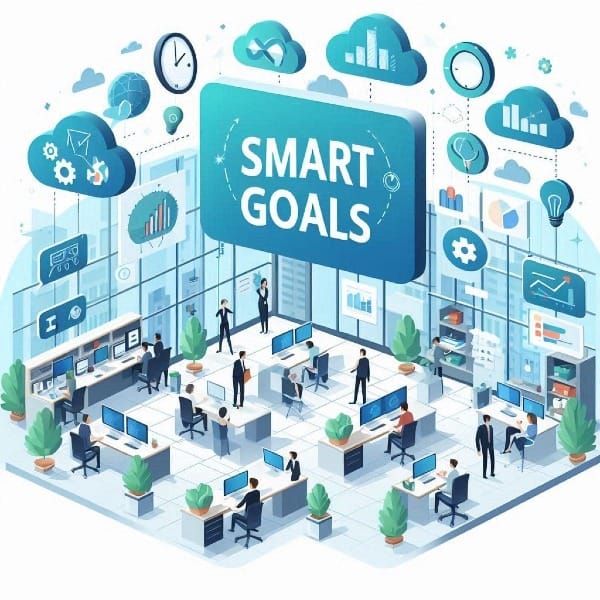
How It Works
- Specific: Clearly define what you want to achieve. The more precise your goal, the easier it will be to plan and execute.
- Measurable: Set criteria for tracking progress and determining when the goal has been met.
- Achievable: Ensure the goal is realistic, given your resources and constraints.
- Relevant: Align the goal with your broader objectives to ensure it supports your long-term ambitions.
- Time-bound: Set a deadline or timeframe to create urgency and maintain focus.
Actionable Tips
- Break larger goals into smaller, manageable milestones that are easier to achieve.
- Use an app like Notion, Trello, or Todoist to set SMART goals and track your progress.
- Review and adjust your goals regularly to ensure they remain relevant and achievable.
Common Pitfalls and How to Avoid Them
- Setting vague goals: Avoid goals like "do better" or "improve productivity." Be specific with what you want to achieve.
- Neglecting to set deadlines: Without time limits, goals can lose urgency, leaving gaps for procrastination to happen.
- Not measuring progress: Track your progress weekly or monthly to stay motivated and on course.
Key Takeaway
Setting SMART goals provides a clear roadmap to success by breaking down your objectives into specific, measurable, and attainable steps. This structured approach ensures that your goals are realistic and aligned with your long-term aspirations, keeping you focused and productive.
2. Achieve More with Less: Master the 80/20 Rule
The 80/20 rule, also known as the Pareto Principle, states that 80% of results come from 20% of efforts. This powerful concept can dramatically increase your productivity by helping you focus on the tasks that truly matter.
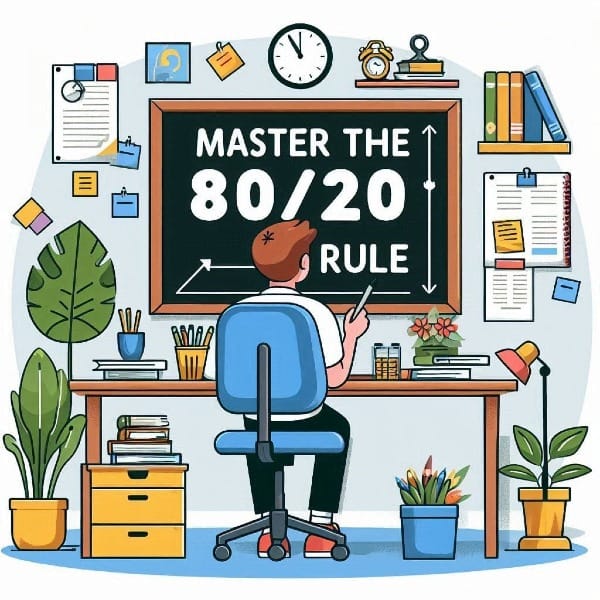
How It Works
- Identify the tasks that yield the highest outcome.
- Focus 80% of your efforts on the 20% of tasks that contribute most to your goals.
- Minimize time spent on less impactful activities like social media scrolling.
Actionable Tips
- Regularly analyze your tasks to pinpoint the top performers.
- Delegate or downsize less productive activities.
- Use tools like Notion to track and categorize your tasks based on their impact and the effort required.
Notion is your all-in-one organized workspace for notes, tasks, and projects. Read more about Notion in the link below


Common Pitfalls and How to Avoid Them
- Misidentifying which tasks are in the top 20%: Regular review and adjustment are crucial.
- Neglecting the 80% of tasks entirely: While the focus should be on high-impact tasks, other tasks still need attention.
Key Takeaway
By applying the 80/20 rule, you can significantly boost your productivity and outcomes, ensuring your efforts are directed where they matter most.
3. Design Your Day: Utilize Time Blocking
Time blocking is a technique where you divide your day into blocks dedicated to specific activities. This method helps you manage your time effectively and ensures that each task gets the focus it needs.
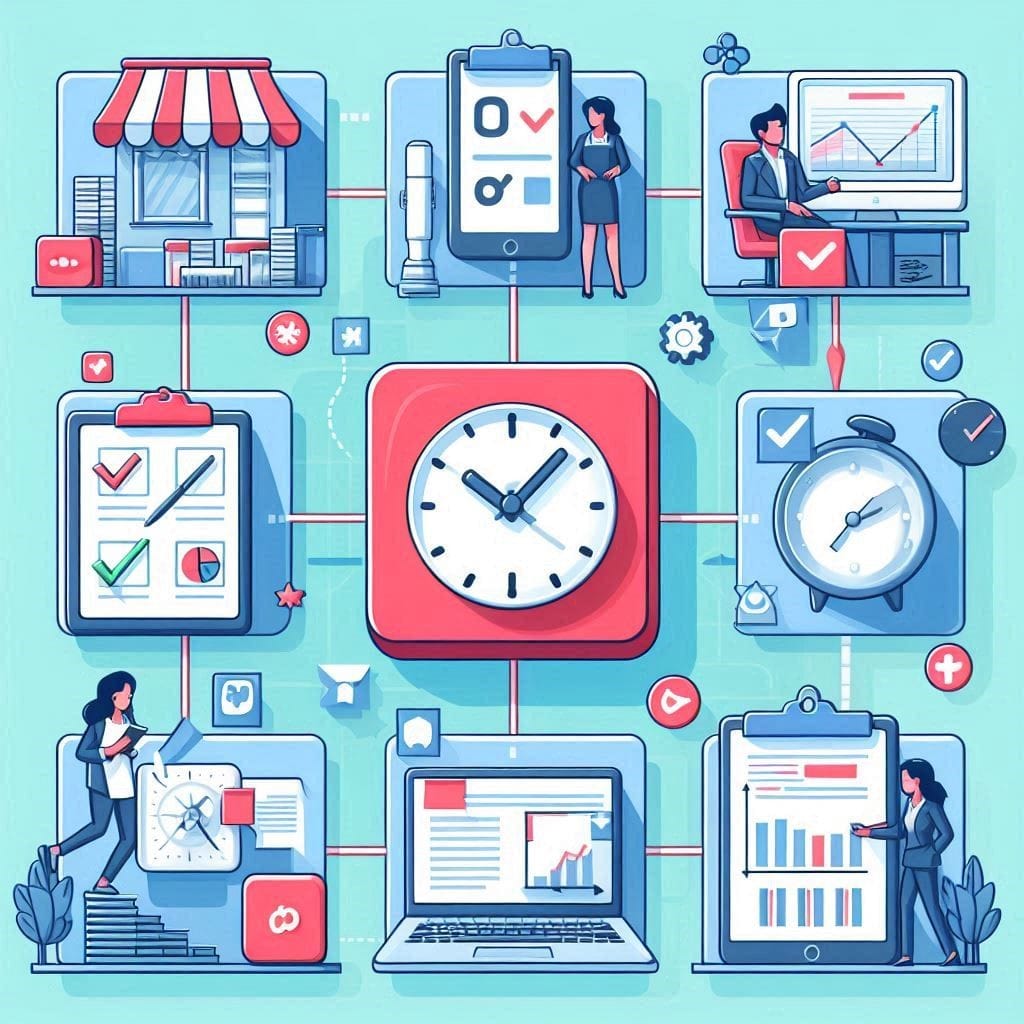
How It Works
- Divide your day into blocks dedicated to specific activities.
- Allocate tasks to these blocks based on their priority and the time of day when you are most productive. Read more on Shocking Reasons You're Wasting Your Most Productive Time (And How To Fix It)
- Stick to the schedule, focusing solely on the designated task during each block.
Actionable Tips
- Create and manage your time blocks using a digital calendar available on Google, Microsoft, or other popular providers.
- Plan your blocks the night before to hit the ground running each morning.
- Use a timer to respect the boundaries of each block.
- Include buffer time between blocks for unexpected tasks or breaks.
Hofstadter's Law: It always takes longer than you expect, even when you take into account Hofstadter's Law.
Common Pitfalls and How to Avoid Them
- Underestimating the time needed for tasks: Always add a buffer period between blocks for flexibility.
- Being too rigid with your schedule. Allow some flexibility for unexpected urgent matters.
Key Takeaway
Using the Eisenhower Box method, categorize each task based on urgency and importance. Time blocking minimizes the fatigue of task-switching and ensures focused work periods, significantly enhancing your productivity and work quality. Read more about task switching and why multi-tasking is a myth.
4. Simplify Your Focus: Use the Eisenhower Box
The Eisenhower Box, named after President Dwight D. Eisenhower, is a simple decision-making tool that helps you prioritize tasks by urgency and importance. This method enables you to focus on what truly matters and make better decisions about how to allocate your time.

How It Works
- Draw a simple four-quadrant box on a piece of paper or use a digital tool.
- Label the quadrants: Urgent & Important, Important but Not Urgent, Urgent but Not Important, Neither Urgent nor Important.
- Sort tasks into these quadrants to prioritize your day.
Examples:
- Urgent & Important: Meeting a project deadline, preparing for a presentation.
- Important but Not Urgent: Planning future goals, developing a skill.
- Urgent but Not Important: Responding to non-essential emails, paying routine bills.
- Neither Urgent nor Important: Scrolling social media, watching TV aimlessly.

Actionable Tips
- Use a spreadsheet or digital fillable PDF (link description above) to create and maintain your Eisenhower Box.
- Regularly reassess the urgency and importance of your tasks.
- Make it a habit to never sleep without planning the next day using this matrix.
- Delegate or eliminate tasks in the "Urgent but Not Important" and "Neither" quadrants when possible.
Common Pitfalls and How to Avoid Them
- Spending too much time on urgent but not important tasks: Learn to delegate these effectively.
- Neglecting the "Important Tasks" quadrant: These tasks often contribute most to long-term success.
Key Takeaway
The Eisenhower Box helps you distinguish between tasks that require immediate attention and those that can be planned or delegated, leading to more effective time management and increased productivity.


5. Focus on High Impact Tasks: Apply the Rapid Planning Method (RPM)
The Rapid Planning Method (RPM), developed by Tony Robbins, focuses on outcome-oriented planning, emphasizing results and the purpose behind tasks. This method aligns your daily actions with your bigger goals, enhancing motivation and clarity.
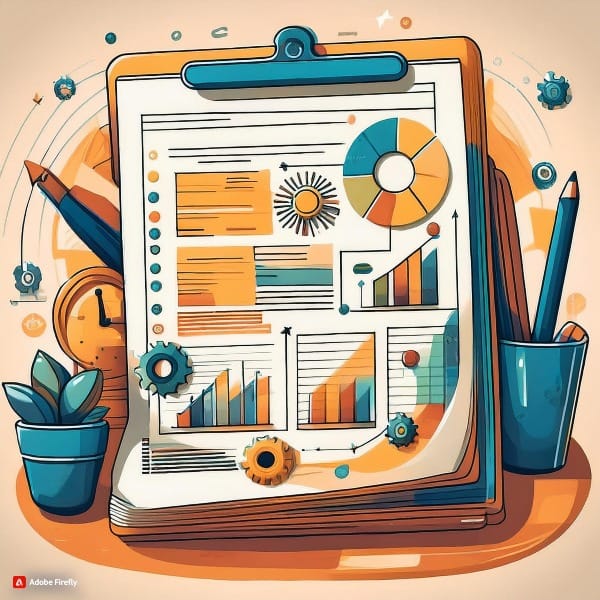
How It Works
- Identify the result you want to achieve.
- Determine the purpose—why you want this result.
- List the specific actions required to achieve this result.
Actionable Tips
- Use a planning tool like Notion to track your RPM plans and progress.
- Always align your daily actions with the larger purpose and end result.
- Review and adjust your RPM plan weekly to stay on track.
- Break down larger goals into smaller, actionable steps.
Common Pitfalls and How to Avoid Them
- Failing to define clear results or reasons can lead to a lack of direction. Keep your end goals specific and compelling so they do not become convoluted.
- Overlooking the 'why' behind your goals: Understanding the purpose of your objective will keep you motivated.
Key Takeaway
By focusing on outcomes and purpose, RPM helps you stay motivated and aligned with your most important goals, leading to increased productivity and satisfaction.
Get inspired: Join the Free Newsletter Now!
6. Streamline Your Workflow: Implement the Pomodoro Technique
The Pomodoro Technique breaks work into intervals, traditionally 25 minutes in length, separated by short breaks. This method enhances focus and prevents burnout, making it easier to tackle large projects or maintain concentration on challenging tasks.
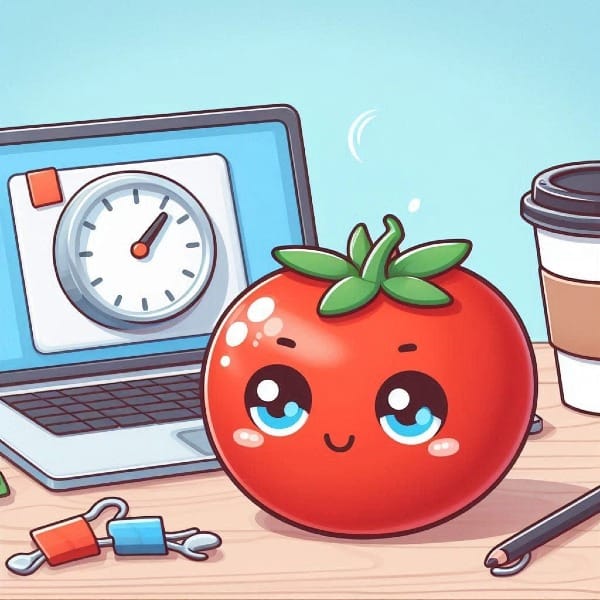
How It Works
- Choose a task to work on.
- Set a timer for 25 minutes.
- Work on the task until the timer rings.
- Take a 5-minute break.
- Repeat the process and take a longer break after four cycles.
Access FREE online Pomodoro Timer on pomofocus.io
Actionable Tips
- Use a dedicated Pomodoro timer app or RescueTime to track your work intervals.
- Gradually increase your Pomodoro sessions as you build your focus stamina.
- Use your breaks to stretch or take a short walk to recharge.
- Adjust the time intervals to suit your personal work style and task requirements.

Common Pitfalls and How to Avoid Them
- Ignoring breaks can lead to burnout: Ensure you take breaks as scheduled to maintain the effectiveness of your sessions.
- Getting distracted during Pomodoro sessions: Communicate your focus time to others and use "do not disturb" settings to stay on track.
Key Takeaway
The Pomodoro Technique helps maintain high levels of productivity throughout the day by balancing focused work with necessary breaks, leading to improved concentration and reduced mental fatigue.
7. Maximize Efficiency: Delegate and Outsource
Delegating and outsourcing involve assigning tasks to others to free up your time for more critical activities. This strategy is essential for managing workload effectively and focusing on high-value tasks that align with your core competencies.

How It Works
- Identify tasks that can be done by others.
- Choose the right person with relevant skills or services for the job.
- Clearly communicate the task requirements and deadlines.
- Follow up and provide feedback.

Actionable Tips
- Use platforms like Fiverr Marketplace to find skilled freelancers for specific tasks.
- Create clear documentation for recurring tasks to make delegation easier.
- Trust the delegated person, service provider, or your team and provide clear instructions.
- Follow up regularly to ensure tasks are on track.
Common Pitfalls and How to Avoid Them
- Micromanaging can undermine delegation: Set clear expectations but allow autonomy.
- Delegating without proper instructions: Invest time in clear communication to save time later.
Key Takeaway
Effective delegation and outsourcing allow you to focus on high-priority activities, enhance team productivity, and leverage others' strengths, ultimately boosting overall efficiency and output.
Boost your week: Sign up for insightful tips!
8. Cut Through the Noise: Limit Distractions
Limiting distractions involves creating an environment and setting boundaries to maintain focus and productivity. This technique is vital for deep work and achieving a state of flow where you're fully immersed in your tasks. The image below shows how much time is spent on social media use which is the primary distraction driver.
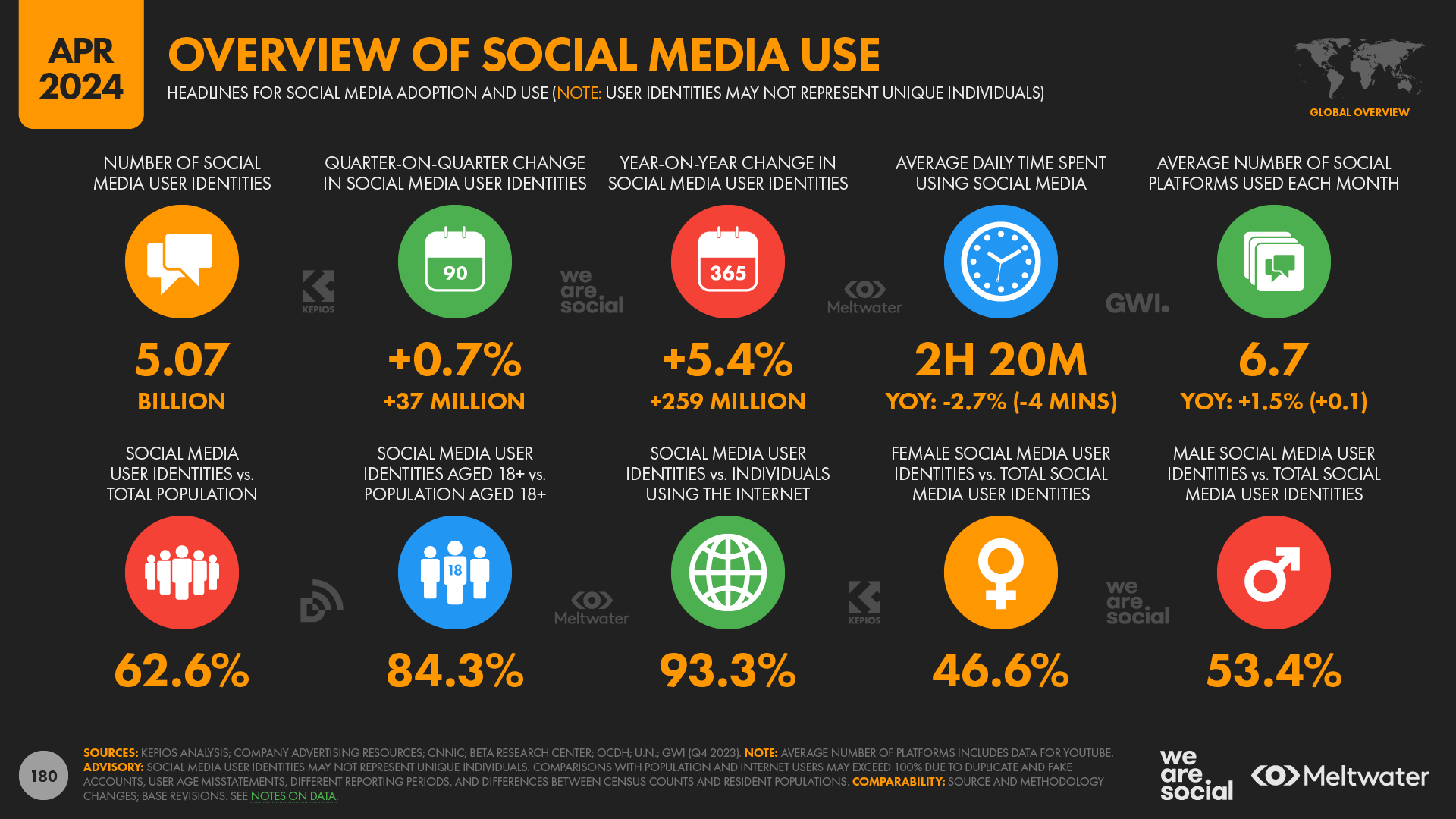
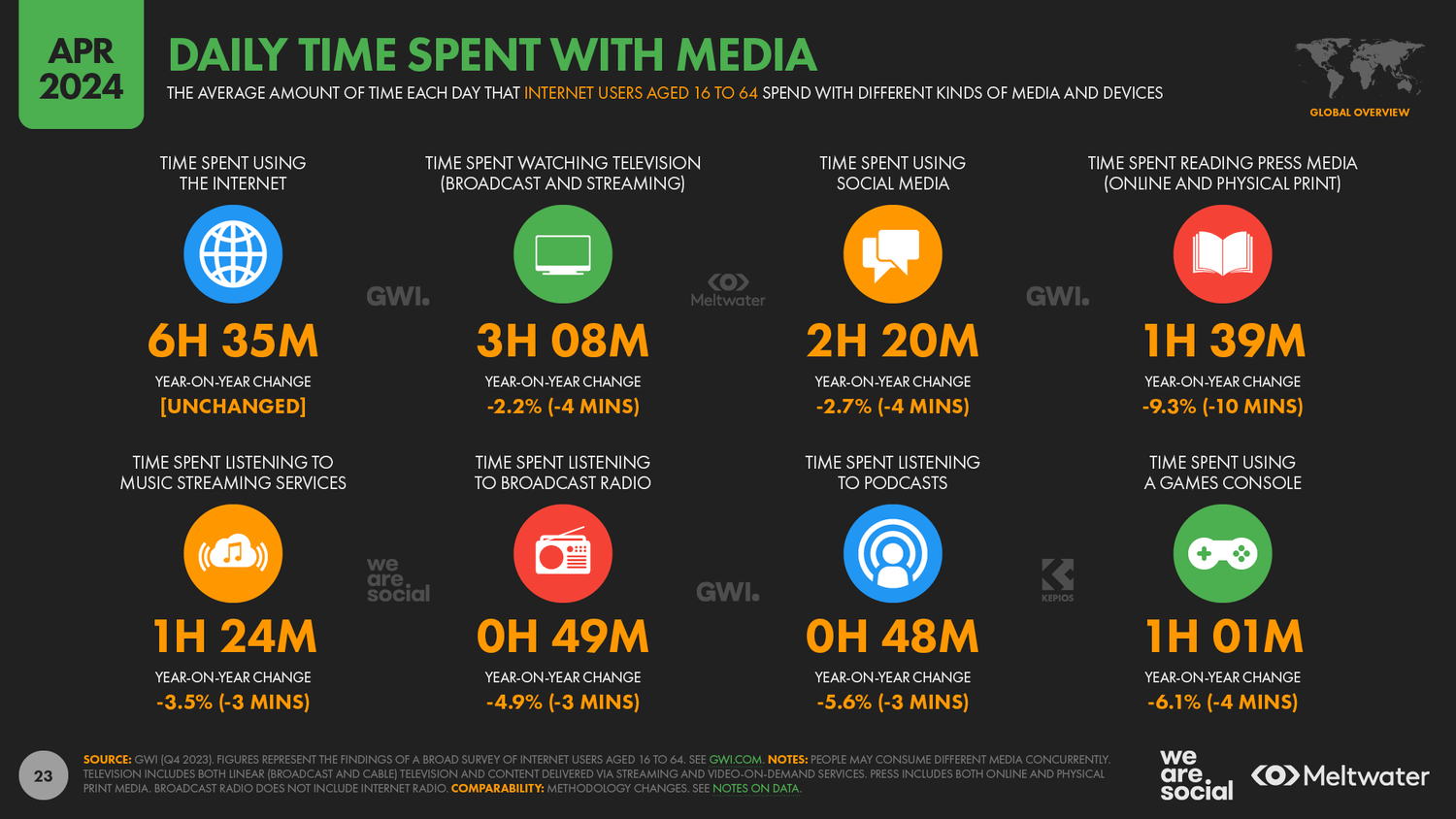

How It Works
- Identify common distractions in your work environment.
- Create a dedicated workspace with minimal distractions.
- Use tools to block distracting websites and apps.
- Set boundaries with colleagues and family members.
Actionable Tips
- Use NordVPN to create a distraction-free online environment by blocking the websites that distract you the most.
- Implement the "Do Not Disturb" mode on your devices during focused work periods.
- Use noise-canceling headphones to minimize noise distractions.
- Schedule specific times for checking emails and messages to avoid constant interruptions.

Common Pitfalls and How to Avoid Them
- Allowing small distractions to slip through: Consistency is key to maintaining a distraction-free environment. If you let it happen, it is extremely hard to bring back your focus.
- Being too rigid and isolating yourself: Balance-focused work with necessary communication and collaboration.
Key Takeaway
By actively limiting distractions, you create an environment conducive to deep work and high productivity, allowing you to accomplish more in less time and with better quality and efficiency.
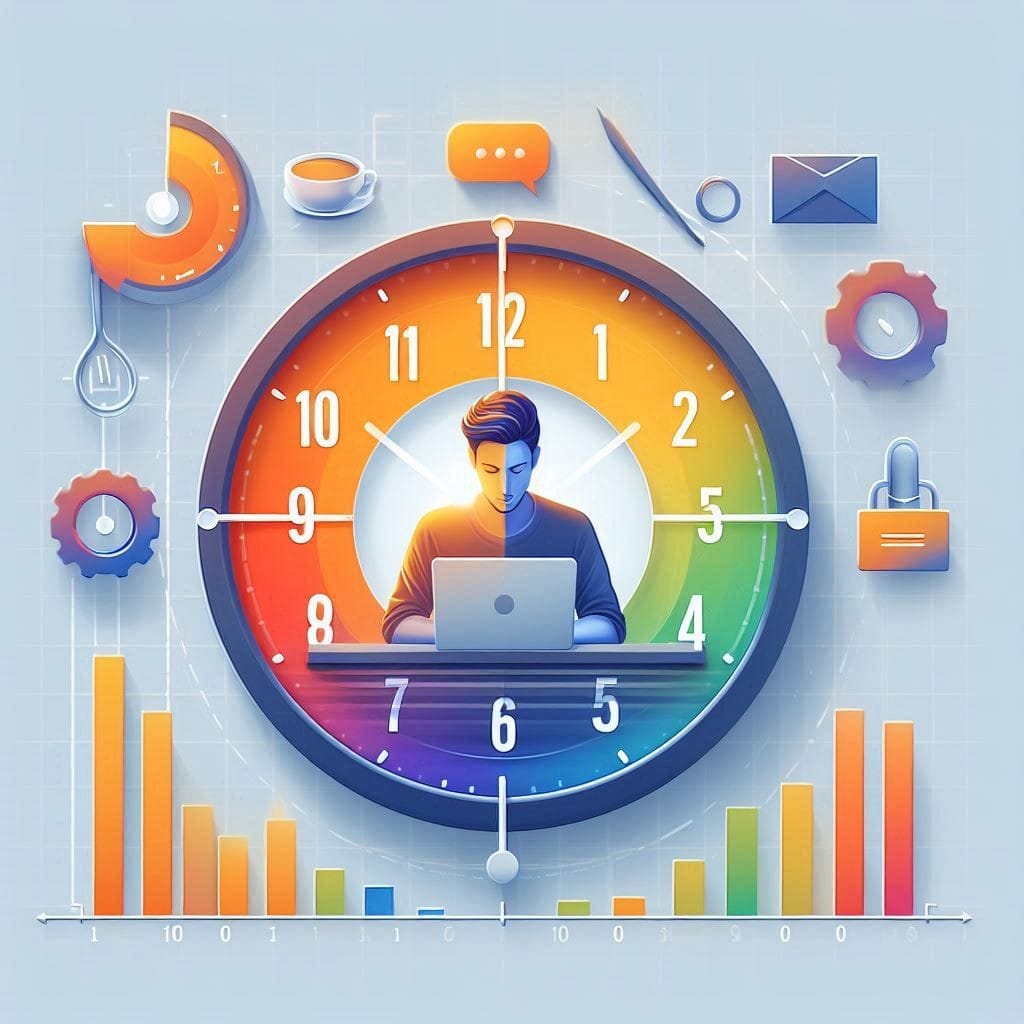

9. Avoid Overwhelm: Break Tasks into Smaller Steps
Breaking larger tasks into smaller, manageable steps makes them less daunting and easier to tackle. This approach improves productivity by making progress feel more achievable and providing a clear roadmap for complex projects.

How It Works
- Identify the larger task or project.
- Break it down into smaller, actionable steps.
- Organize these steps in a logical sequence.
- Focus on completing one step at a time.
Actionable Tips
- Use a project management tool built into Notion to break down and track task progress. There are numerous free and paid templates available on Notion to get you started.
- Set deadlines for each smaller task to ensure steady progress.
- Celebrate small wins to maintain motivation.
- Regularly review and adjust your task breakdown as the project evolves.
Common Pitfalls and How to Avoid Them
- Breaking tasks into steps that are still too large: Aim for steps that can be completed in a single sitting.
- Losing sight of the big picture: Regularly review how smaller tasks contribute to the overall goal.
Key Takeaway
By breaking tasks into smaller steps, you make progress more tangible and manageable, reducing overwhelm and increasing your ability to tackle complex projects effectively.
Transform your routine: Quick tips, weekly. Join us now!
10. Gain Clarity: Conduct a Time Audit
A time audit involves tracking and analyzing how you spend your time to identify inefficiencies and areas for improvement. This method is crucial for understanding your current time usage and optimizing your daily routines for maximum productivity.

How It Works
- Track all your activities for a week, including work and personal time.
- Categorize your activities (e.g., productive work, meetings, breaks, social media).
- Analyze the data to identify time-wasters and areas for improvement.
- Adjust your schedule to align with your priorities and productivity goals.

Actionable Tips
- Use a time-tracking tool like RescueTime to log your digital activities automatically. You can also take advantage of the native apps on your phone, like Screen Time (iOS) and Digital Wellbeing (Android), to gather basic information on your phone usage.
- Be honest and accurate in your tracking, including non-productive time.
- Look for patterns in your most productive hours and schedule important tasks accordingly.
- Use the insights to create a more efficient and balanced schedule.
Common Pitfalls and How to Avoid Them
- Ignoring the data or failing to make changes based on your findings: Use the audit results to drive meaningful adjustments and correct your course.
- Not conducting time audits frequently enough: Regular audits help you stay on track and adapt to changing circumstances.
Key Takeaway
A thorough time audit provides valuable insights into your time usage. It allows you to make informed decisions to eliminate inefficiencies and focus on high-value activities, ultimately boosting your productivity and work-life balance.

11. Boost Productivity: Use a Planning Tool
Planning tools help organize tasks, schedules, and priorities in one place, making it easier to manage time and stay on track. These tools provide a centralized system for tracking deadlines, collaborating with team members, and visualizing your workflow.
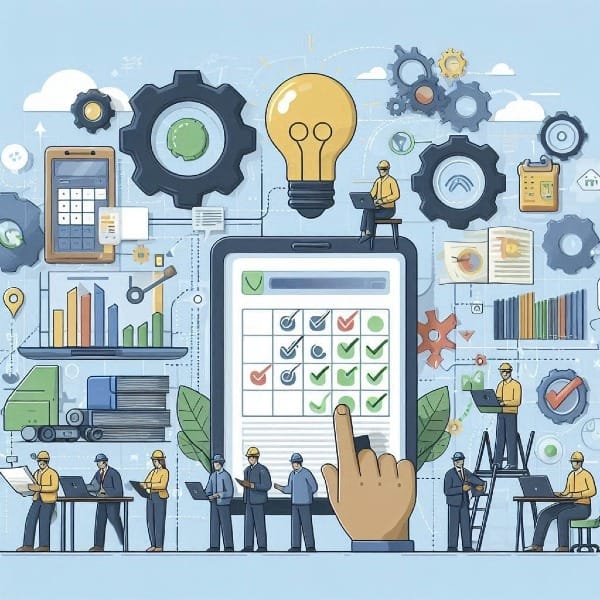
How It Works
- Choose a planning tool that suits your needs and work style.
- Input your tasks, deadlines, and schedules into the tool.
- Categorize and prioritize your tasks within the system.
- Regularly update and review your plans to stay organized.
Actionable Tips
- Try Notion for a versatile, all-in-one workspace for planning, organizing, and tracking your Projects. It offers free and paid templates to help you get started.
- Use templates within your chosen tool to streamline your planning process.
- Set reminders for important deadlines and milestones.
- Integrate your planning tool with other productivity apps you use.
Common Pitfalls and How to Avoid Them
- Overcomplicating your planning system: Keep your tool usage simple and focused on what you need.
- Failing to review and update your plans regularly: Schedule weekly review sessions to keep your plans current.
Key Takeaway
A well-chosen planning tool can significantly enhance your productivity by providing structure, clarity, and organization to your work and personal life.
12. Enhance Focus: Practice Mindfulness
Mindfulness involves staying present and fully engaged at the moment, reducing stress, and improving focus. This technique can be integrated into your daily routine to enhance productivity and overall well-being.

How It Works
- Set aside time each day for mindfulness practice.
- Focus on your breathing and the present moment during these sessions.
- When your mind wanders, gently bring your attention back to the present.
- Gradually increase the duration of your mindfulness sessions.

Actionable Tips
- Start with short, 5-minute sessions and gradually increase the duration.
- Use apps like Headway to guide your mindfulness practice and track your progress. You can also try alternatives such as Calm and Headspace.
- Incorporate mindfulness breaks during your workday to reset and refocus.
- Practice mindful breathing before starting important tasks to enhance concentration.
Common Pitfalls and How to Avoid Them
- Expecting immediate results: Mindfulness is a practice that builds over time.
- Getting frustrated with a wandering mind: Redirecting your thoughts is part of the practice, and it takes time to master it.
Key Takeaway
Regular mindfulness practice can significantly improve your focus, reduce stress, and increase overall productivity by training your mind to stay present and engaged.
13. Streamline Decisions: Use Checklists
Checklists help ensure that tasks are completed in a structured and consistent manner. This tool is essential for managing repetitive tasks, reducing errors, and improving efficiency in both personal and professional contexts.

How It Works
- Identify tasks that can be structured into a checklist.
- Create a detailed checklist for these tasks, breaking them down into clear, actionable steps.
- Use the checklist to guide your actions and ensure nothing is missed.
- Regularly review and update your checklists to improve efficiency.
Actionable Tips
- Use a digital tool that may already be available on your phone, or use Notion to create and manage your checklists across devices.
- Start with simple checklists and gradually add more detail as you refine your processes.
- Share checklists with team members to ensure consistency in collaborative tasks.
- Use checklists for both routine tasks and complex projects to maintain quality and efficiency.
Here’s a list of popular checklist apps with short descriptions:
- Todoist – A versatile to-do list and task manager with project organization features.
- Microsoft To Do – Simple, cloud-synced task manager with integration into Microsoft services.
- TickTick – Offers task tracking, scheduling, and habit-building tools.
- Google Keep – Minimalistic note-taking and checklist app with cloud sync across devices.
- Any.do – Task management with reminders, calendar integration, and voice-entry options.
- Trello – Board-based task management for organizing tasks into lists and cards.
- Evernote – Note-taking app with checklist features, great for project management and task tracking.
- Notion – All-in-one workspace for notes, tasks, and databases with checklist support.
- Asana – Task and project management tool with a focus on team collaboration.
- Wunderlist (now part of Microsoft To Do) – Intuitive to-do list app for tasks, subtasks, and reminders.
Common Pitfalls and How to Avoid Them
- Overloading checklists with too many items: Keep them focused and actionable. Learn how intentionally omitting certain tasks can lead to a more balanced, focused, and fulfilling life.
- Relying too heavily on checklists at the expense of flexibility: Allow room for judgment and adaptation when necessary.
Key Takeaway
Checklists provide a clear roadmap for completing tasks, reducing the chance of errors and ensuring consistency. Thus, they ultimately save time and improve the quality of your work.
Elevate your day: Free insights every week. Sign up now!
14. Beat Procrastination: "Eat That Frog"
The "Eat That Frog" technique, popularized by Brian Tracy, involves tackling your most challenging task first thing in the morning. This approach helps overcome procrastination and sets a productive tone for the day.

How It Works
- Identify your most important and challenging task (the "frog").
- Start your day by completing this task before anything else.
- Move on to other tasks once your "frog" is done.

Actionable Tips
- Use RescueTime to identify your most productive morning hours and schedule your "frog" during this time.
- Plan your "frog" the night before to avoid morning decision fatigue.
- Break down complex "frogs" into smaller, more manageable steps.
- Reward yourself after completing the challenging task to stay motivated.
Common Pitfalls and How to Avoid Them
- Choosing tasks that are not truly your "frog." Be honest about what tasks are most challenging and impactful and bring you closer to your goals.
- Allowing distractions to derail your morning focus: Create a distraction-free environment for tackling your "frog."
Key Takeaway
By addressing the most daunting task first, you build momentum and reduce the temptation to procrastinate, leading to increased productivity and a sense of accomplishment throughout the day.

15. Get Organized: Implement a Personal Knowledge Management System
A Personal Knowledge Management (PKM) system helps you organize, store, and retrieve information effectively. This approach enhances productivity by reducing time spent searching for information and improving your ability to connect ideas.
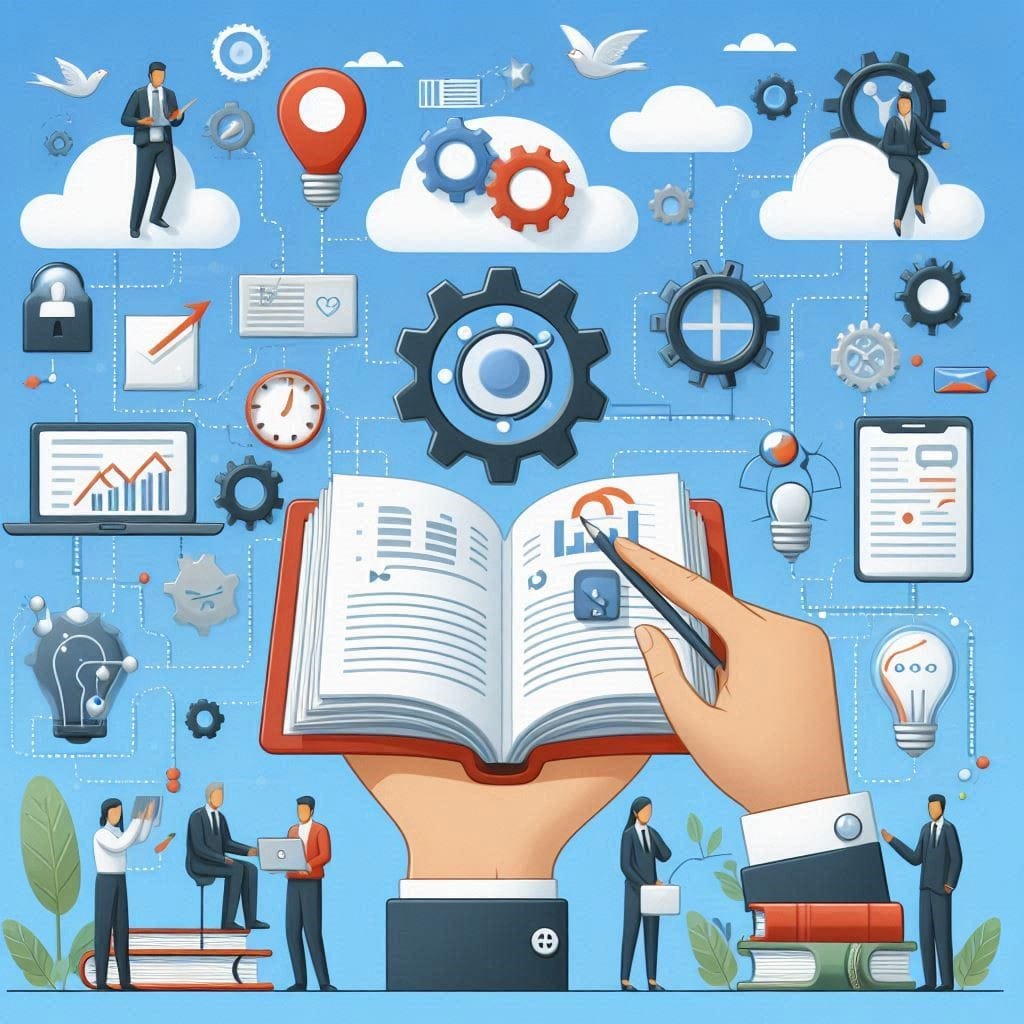
How It Works
- Choose a central tool for storing and organizing information.
- Develop a consistent system for categorizing and tagging information.
- Regularly input new information and ideas into your system.
- Review and refine your system periodically to ensure it remains effective.
Actionable Tips
- Use Notion as your central PKM tool to create a flexible and powerful knowledge base.
- Implement a consistent tagging system to make information easily retrievable.
- Set aside time each week to review and organize new information in your PKM system.
- Use your PKM system to connect ideas and generate new insights for your work.
Common Pitfalls and How to Avoid Them
- Over-complicating your system: Start simple and add complexity only as needed.
- Neglecting to input information consistently: Make it a habit to add new knowledge to your system regularly.
Key Takeaway
A well-implemented PKM system can significantly boost your productivity by making information readily accessible and fostering connections between ideas, leading to enhanced creativity and problem-solving abilities.
16. Stay Focused: Minimize Interruptions
Minimizing interruptions is crucial for maintaining focus and productivity. This technique involves creating an environment and setting boundaries to reduce distractions and allow for sustained periods of concentrated work.

How It Works
- Identify common sources of interruptions in your work environment.
- Implement strategies to reduce or eliminate these interruptions.
- Communicate your needs for uninterrupted work time to colleagues and family.
- Create a system for handling urgent matters without derailing your focus.
Actionable Tips
- Use NordVPN to create a secure, distraction-free online environment, especially when working remotely.
- Implement "Do Not Disturb" settings on your devices during focused work periods.
- Designate specific times for checking emails and messages to avoid constant interruptions.
- Use noise-canceling headphones to minimize auditory distractions in busy environments.
Common Pitfalls and How to Avoid Them
- Being too rigid with your "no interruptions" policy: Allow for flexibility in truly urgent situations.
- Neglecting to communicate your focus times clearly: Ensure others understand and respect your need for uninterrupted work.
Key Takeaway
By actively minimizing interruptions, you create an environment conducive to deep focus and high productivity, allowing you to accomplish more in less time and with better quality.
Get the edge with the free weekly newsletter. Join Now!
17. Build Consistency: Develop Daily Routines
Developing daily routines helps create structure and predictability in your day, making it easier to manage time and stay productive. Consistent routines reduce decision fatigue and help build positive habits.
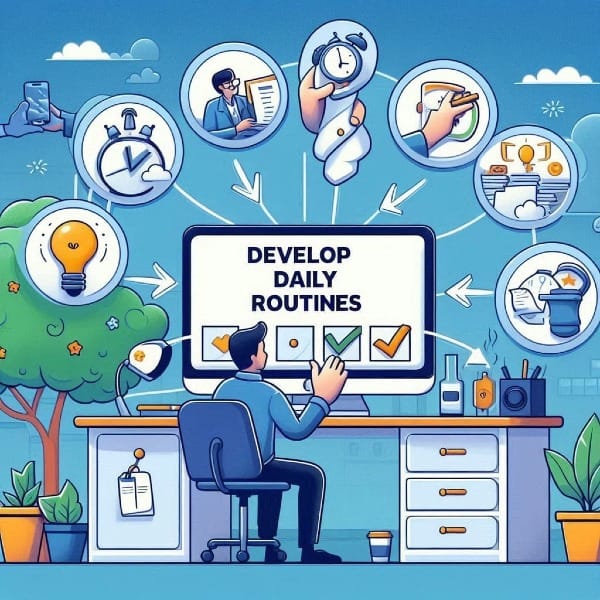
How It Works
- Identify key tasks and activities that need to be part of your daily routine.
- Schedule these activities at consistent times each day.
- Start with a basic routine and gradually add more elements as habits form.
- Stick to your routine consistently to build long-lasting habits.
Actionable Tips
- Use Headway to learn about effective routine-building strategies and track your progress.
- Start with a morning and evening routine to bookend your day.
- Include both work-related tasks and personal care activities in your routines.
- Be flexible and adjust your routines as needed to accommodate changing circumstances.
Common Pitfalls and How to Avoid Them
- Creating overly ambitious routines that are hard to maintain: Start small and build gradually.
- Being too rigid with your routines: Allow some flexibility to adapt to unexpected situations.
Key Takeaway
Consistent daily routines provide a framework for your day, reducing decision fatigue and making it easier to tackle important tasks and maintain healthy habits.
18. Enhance Efficiency: Batch Similar Tasks
Task batching involves grouping similar tasks together and completing them in a dedicated time block. This method reduces task-switching and improves efficiency by allowing you to maintain focus on similar types of work.

How It Works
- Identify tasks that are similar in nature (e.g., emails, phone calls, writing).
- Allocate specific times to batch these tasks together.
- Focus on completing each batch without interruptions.
- Move on to the next batch or type of task once the current batch is complete.
Actionable Tips
- Use digital tools suggested earlier to organize and group similar tasks for efficient batching.
- Set aside specific times each day or week for task batching.
- Use timers to maintain focus during each batch.
- Communicate your batching schedule to colleagues to minimize interruptions.
Common Pitfalls and How to Avoid Them
- Overbatching can lead to monotony: Ensure you have variety in your tasks to maintain engagement.
- Neglecting urgent tasks in favor of batching: Be flexible enough to handle time-sensitive issues as they arise.
Key Takeaway
Task batching minimizes the time lost in switching between different types of tasks, allowing you to work more efficiently and maintain better focus throughout your day.
19. Manage Stress: Incorporate Regular Breaks
Regular breaks help maintain productivity and reduce stress by giving your mind and body time to rest and recharge. This technique is crucial for sustaining high levels of productivity over long periods.

How It Works
- Schedule regular breaks throughout your workday.
- Use breaks to engage in activities that help you relax and recharge.
- Return to work with renewed focus and energy.
- Adjust the frequency and duration of breaks based on your personal needs and work demands.
Actionable Tips
- Use the app and tools suggested earlier to track your work patterns and schedule optimal break times.
- Implement the Pomodoro Technique, working in focused bursts with short breaks in between.
- Use breaks for physical movement, stretching, or short walks to boost energy and reduce sedentary time.
- Practice quick mindfulness exercises during breaks to clear your mind and reduce stress.
Common Pitfalls and How to Avoid Them
- Skipping breaks to continue working: Remember that breaks enhance overall productivity.
- Using break time for work-related activities: Ensure your breaks are truly restful and rejuvenating.
Key Takeaway
Regular, well-planned breaks prevent burnout and help you maintain a steady level of productivity throughout the day, leading to better overall performance and well-being.
20. Optimize Your Schedule: Use Artificial Deadlines
Setting artificial deadlines involves creating self-imposed time limits that are earlier than the actual due dates. This technique helps you stay ahead of schedule, reduce last-minute stress, and improve the quality of your work through better time management.

How It Works
- Set a deadline for each task that is earlier than the actual due date.
- Plan your work to meet these artificial deadlines.
- Use the extra time before the real deadline to review and refine your work.
- Gradually adjust your artificial deadlines to find the optimal buffer time for different types of tasks.
Actionable Tips
- Use suggested tools to set and track artificial deadlines for your projects and tasks.
- Set realistic artificial deadlines that allow you to complete tasks comfortably.
- Use the buffer time to review your work and make improvements.
- Communicate your personal deadlines to team members to align expectations.
Common Pitfalls and How to Avoid Them
- Setting deadlines that are too tight causes unnecessary stress: Ensure your artificial deadlines are challenging but achievable.
- Procrastinating until the artificial deadline: Treat your self-imposed deadlines with the same importance as real ones.
Important but Not Urgent: Planning future goals and developing a skill.
Artificial deadlines create a sense of urgency, helping you avoid procrastination and manage your time more effectively. This technique not only helps you meet actual deadlines consistently but also improves the quality of your work through built-in review time.
Conclusion
You're now equipped with 20 powerful productivity strategies to transform your daily routine and achieve more with less stress. But why stop here? Share this post with friends, colleagues, or family members who could also benefit from these actionable tips. Together, we can all work smarter, not harder! If you’ve found value in this guide, spread the word and help others unlock their full potential too.
Books to Inspire You
Here are 10 of the most popular and highly recommended books on productivity, time management, and personal effectiveness:
- "Atomic Habits" by James Clear
Focuses on the power of small habits and how they compound to bring significant changes in life and productivity. - "Deep Work" by Cal Newport
Explores the concept of deep focus and how mastering it can boost productivity and success. - "The 7 Habits of Highly Effective People" by Stephen R. Covey
A classic in personal development and productivity, emphasizing principles that guide effective behavior. - "Getting Things Done" by David Allen
Provides a detailed system (the GTD method) for organizing tasks and increasing productivity. - "Eat That Frog!" by Brian Tracy
Teaches how to prioritize tasks and get the most important work done first. - "Essentialism: The Disciplined Pursuit of Less" by Greg McKeown
Advocates for focusing on what's truly essential and eliminating unnecessary tasks. - "The One Thing" by Gary Keller and Jay Papasan
Encourages a single-minded focus on the one most important task to maximize productivity. - "The Power of Habit" by Charles Duhigg
Explores the science behind habit formation and how to use habits to improve productivity. - "Make Time: How to Focus on What Matters Every Day" by Jake Knapp and John Zeratsky
Provides strategies for reclaiming time and focusing on what truly matters in your day. - "The Pomodoro Technique" by Francesco Cirillo
Introduces the famous Pomodoro time management method, which uses focused intervals to increase productivity.
These books are widely regarded for their insights and actionable strategies to improve personal productivity.
